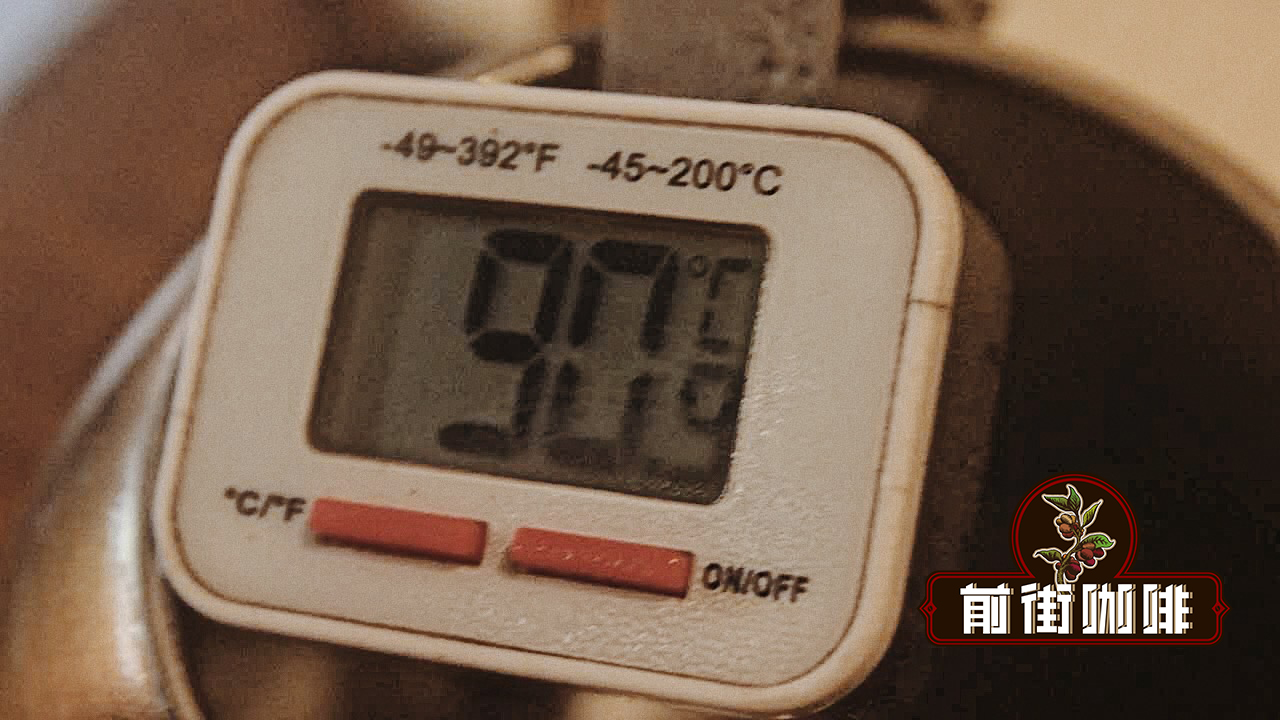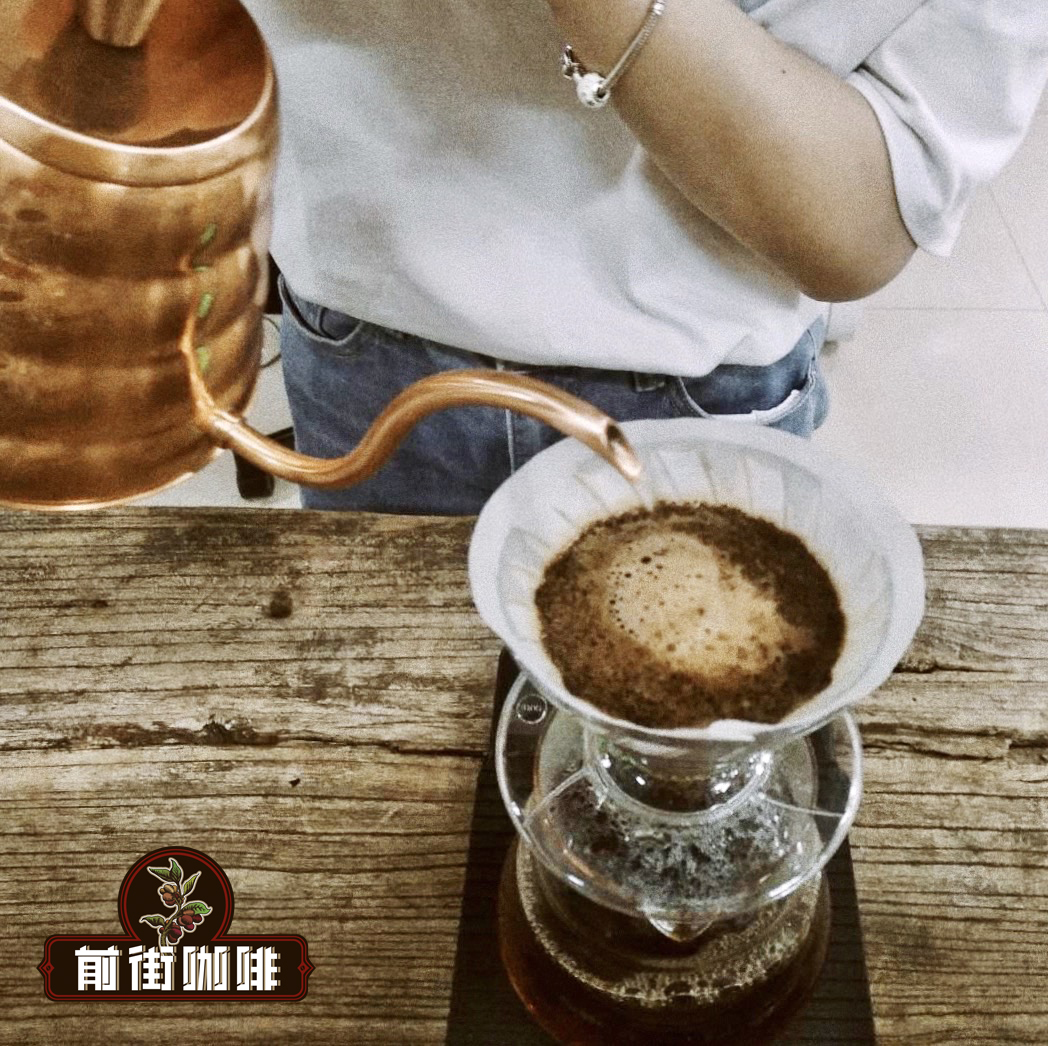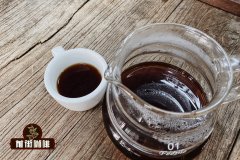How to adjust the influence of Water temperature on Coffee influence of utensils on Water temperature
Water accounts for 94-98% of a cup of coffee, but in addition, water temperature (including minerals in water) can also affect the sweetness, bitterness and sour taste of coffee.
Controlling the temperature of the cooking water is very important for people who like to flush by hand, but unfortunately, the water temperature is often adversely affected by insufficient training or the use of the wrong equipment.

How does the water temperature affect coffee?
The water temperature will directly affect the release of different substances during cooking.
There are many chemical reactions during cooking. Water will extract chlorogenic acid, acetic acid, malic acid, caffeine, oil and so on. These substances will also be released at different time points. For example, caffeine and fruit acid are released in the first part of brewing, sweetness is released in the middle, and bitterness is released in the latter part.
So what does this have to do with water? The higher the temperature of the water, the faster the substance will be released, and since each substance affects a certain flavor, the cook must carefully control what is extracted at each time.
When the temperature is higher, it will be more difficult to control the extraction, and some substances with bad taste will be released quickly, and words such as too strong and scorched flavor are usually used to describe the coffee whose flavor is out of control due to high temperature extraction.
What about the low temperature?
The best evidence is that people usually say that the cold coffee is too light because the brewing water is too low. However, anyone who has drunk it knows that cold coffee is very smooth, sweet and low in acidity. Although lengthening the brewing time can make up for the low water temperature, some substances are not extracted at low temperatures. The release rates of different flavor components are different at different temperatures.
In addition, because the brewing time and grinding thickness can not fill the defect of brewing at low temperature, the brewed coffee will have a smelly sour taste and lack of alcohol thickness. Because the substance extracted is mainly acid, there is less fat to increase the thickness of alcohol, and less sweetness and bitterness to balance the flavor of coffee.
Accurate cooking is very important, and controlling the water temperature will give you a better flavor.
It is very important not only to have the correct water temperature, but also to maintain the consistency and accuracy of cooking. Unstable water temperature is like turning the oven on and off all the time when baking a cake, causing the oven to lose temperature, and the result will be very bad.
Bad appliances can also affect the temperature of the water.
Unfortunately, water temperature has always been a big variable, and it is impossible to completely remove it, but it can be controlled.
The appliance is also the key to control the cause. Pots with poor thermal insulation and poor heating appliances often lead to unstable results.
Insufficient hot water supply is usually the result of a lack of accuracy in temperature control, coupled with cold water being poured into the water heater at the same time. It is important to use appliances with a stable temperature of water supply. A good machine can even make espresso of stable quality.
A good Italian coffee machine can accurately control the temperature, and it is correct to let the water come into contact with the coffee powder. The problem with hand-brewing coffee is that you often have to add hot water to the hand-brewing pot, which will lead to a drop in the temperature of the kettle.
Train baristas to make the water temperature more stable
However, the point to consider is not just the equipment. High-quality water control systems, such as Marco MIX, can accurately control water temperature. However, if someone pours hot water into a cold hand flushing pot or uses an unpreheated filter cup, it will cause the temperature to drop by more than ten degrees. Preheating hand pots, filter cups, sharing pots and cups are all very important.
Therefore, a well-trained barista is very important, not only the process of preheating the utensils, but also related to cooking skills. The method of brewing will also affect the variation of the water temperature. if you do not keep the coffee powder wet all the time, it may be because the coffee grounds in the filter cup affect the water temperature, resulting in unstable temperature.
Formal education and training, and even participation in professional cooking courses, can help to improve the situation.
As long as it comes to water temperature, there are many factors that will affect the quality and stability of coffee, to ensure that you have high-quality equipment, you can accurately control the brewing factors. Set the standard procedure for hand punching. And whether it is cooking in the store, or planning to take the certification exam, good training is necessary.
After all, good beans have to be washed well to give full play to their flavor.

Important Notice :
前街咖啡 FrontStreet Coffee has moved to new addredd:
FrontStreet Coffee Address: 315,Donghua East Road,GuangZhou
Tel:020 38364473
- Prev
The Development History of Coffee Bean Dryer: pan, Roller, Commercial Bean Dryer, Hot Air Bean Dryer
Coffee has a long history in the pan roasting era. The first people who roasted coffee beans into drinks can be traced back to Central Africa and the Middle East hundreds of years ago, and then the Ottoman Turkish Empire and European colonists brought coffee to the world. The earliest bean roasting tools were thin, perforated pots that roasted directly over high fire, and coffee bakers used spoons to turn the beans and make sure they were roasted.
- Next

How does treatment affect the Chemical composition of Coffee the effect of treatment on roasting techniques
Why do sun beans taste different from water-washed beans? What makes the sweetness of honey treated coffee more obvious? The method of raw bean treatment has a great influence on the flavor, aroma and alcohol thickness of coffee, and it is also an important difference for many people to choose coffee beans. The flavor and aroma of coffee brought by the place of origin will develop the flavor and aroma of coffee when roasted, and the aroma compounds will be reversed by many chemicals.
Related
- Beginners will see the "Coffee pull flower" guide!
- What is the difference between ice blog purified milk and ordinary milk coffee?
- Why is the Philippines the largest producer of crops in Liberia?
- For coffee extraction, should the fine powder be retained?
- How does extracted espresso fill pressed powder? How much strength does it take to press the powder?
- How to make jasmine cold extract coffee? Is the jasmine + latte good?
- Will this little toy really make the coffee taste better? How does Lily Drip affect coffee extraction?
- Will the action of slapping the filter cup also affect coffee extraction?
- What's the difference between powder-to-water ratio and powder-to-liquid ratio?
- What is the Ethiopian local species? What does it have to do with Heirloom native species?

